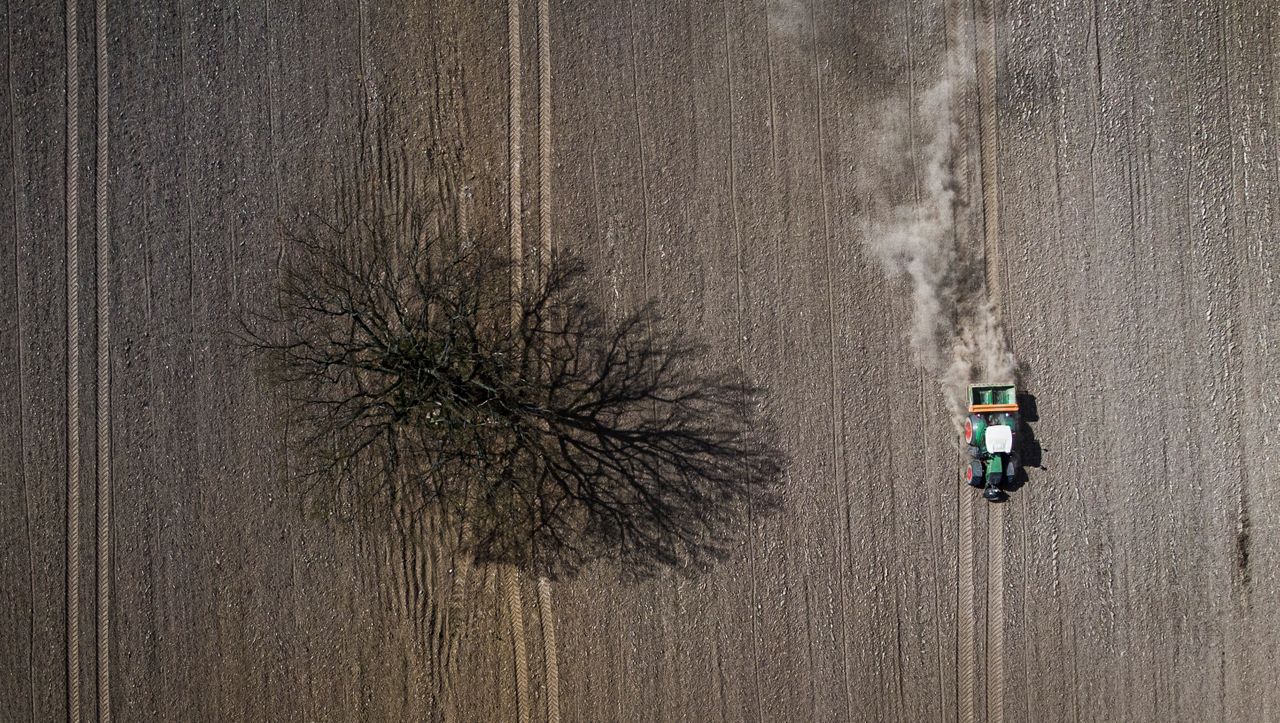Since 2015, Europe has experienced a series of droughts in the summer, some of which have dire consequences for nature. Agriculture suffered as well as forests, and in some places water became scarce. A new study now indicates that it is a drought of historic proportions that we have witnessed in recent years. Researchers wrote in Nature Geoscience magazine. This extraordinary dry period has been attributed to man-made climate change.
For the sake of investigation, the scientists didn’t just look at the weather data in the archives. They used a specific method to analyze tree rings, thus creating a massive dataset depicting the hydroclimatic conditions in Central Europe from the Roman era to the present.
Europe experienced severe summer heatwaves and droughts around 2003, 2015 and 2018. Scientists write that the consequences have also caused the number of heat deaths to rise. In fact, a study published in The Lancet found that about 20,200 deaths among people over 65 in Germany alone in 2018 were related to heat.
Ulf Büntgen of the University of Cambridge, first author of the current study, sums up: “We are all aware of the build-up of the exceptionally hot and dry summers that we have seen in recent years.” “But we needed a careful reconstruction of historical conditions to see how these recent extremes could be compared to previous years.”
For this classification, Büntgen and colleagues made more than 27,000 tree ring measurements from 147 acorns, covering a period of 2,100 years (75 BC to 2018). The samples came, among other things, from archaeological remains and historical building materials, but also from live trees from the present-day Czech Republic and parts of southeastern Bavaria.
Accurate Hydroclimate Archive
Then the researchers extracted and analyzed the stable isotopes of carbon and oxygen from each ring of the trees. While normal tree ring measurements are limited to ring width and wood density, the stable isotopes examined here reflect the physical conditions and tree reactions to them. Carbon values depend on photosynthesis activity, and oxygen values are affected by spring water.
Both values together are closely related to the growing season conditions, ”explains co-author Paolo Cherubini. In this way, stable isotopes of annual rings would lead to a more accurate archive of reconstructing hydroclimatic conditions in temperate regions, where conventional studies with annual rings often fail, adds Jan Esper of the University of Mainz.
In the reconstruction, the tree ring isotope data showed that on the one hand there was a very wet summer in Europe, around 200, 720 and 1100 AD, but there was also a very dry summer as in the years 40, 590, 950 and 1510 AD in general, The continent has gradually become drier over the past two thousand years.
Samples from 2015 to 2018 revealed, however, that drought conditions last summer were much more severe than in 2,100 years before that. “After centuries of slow and remarkable decline, we have seen a severe recession, which is of particular concern to agriculture and forestry,” comments co-author Merrick Trnka. “The unprecedented degradation of forests in large parts of Central Europe confirms our results.”
Researchers attribute the observed increase in an unusually dry summer to man-made global warming and accompanying changes in the position of the polar jet stream. This is one of the two major wind ranges that balance the thermal gradient between the poles and the equator and have a major influence on our weather.
Extreme conditions are becoming more and more common
In fact, another international study showed that the polar jet stream waves (read more about the jet stream here) stopped during the hot summer of 2018. Ulf Böntgen predicts that “climate change does not mean that it will be drier everywhere: in some places the weather may be Wetter or colder, but extreme conditions are becoming more frequent, which can be devastating to agriculture, ecosystems and society as a whole.
The most recent presentation of climate data from the German Weather Service (DWD) matches this: While the data in the current study only lasts until 2018, DWD announced just a few days ago that 2020 was the second-hottest year since the start of the weather records. In Germany. Summer peak values exceeding 40 ° C were not achieved as in 2019, but especially in the period from April to September, which is especially important for plant growth, drought dominated the weather.

“Alcohol buff. Troublemaker. Introvert. Student. Social media lover. Web ninja. Bacon fan. Reader.”







More Stories
Pluto: Astrophysicists have now found a scary explanation
“Time seems to cure long Covid.”
Science: The use of artificial intelligence is changing the way hospitals operate